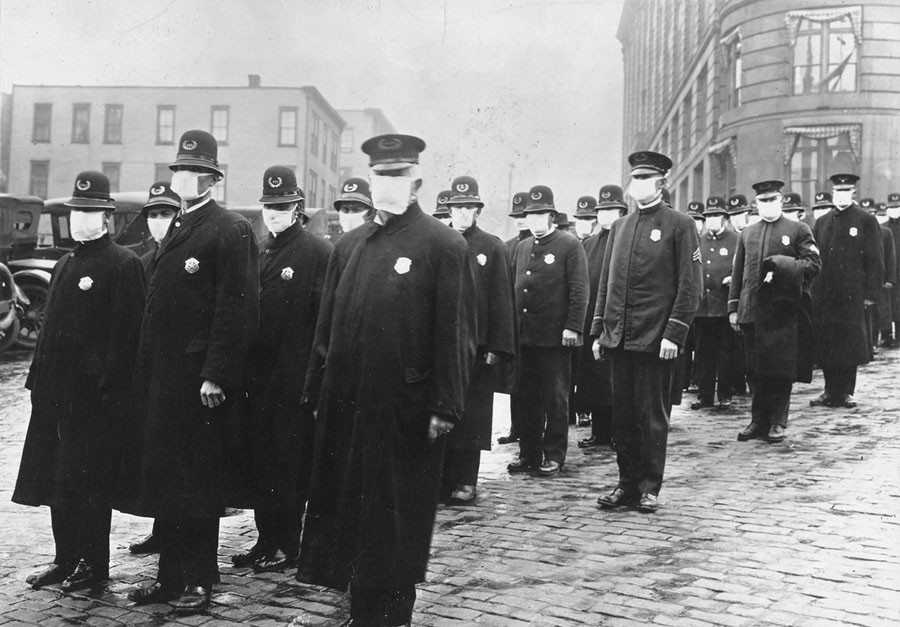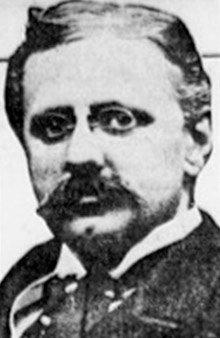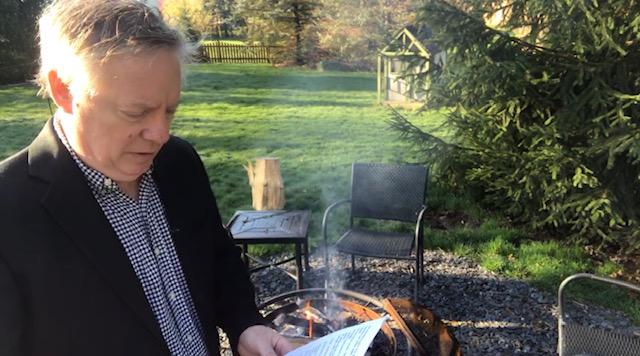
This is your summary of the first 28 days of my Today In 1918 series. I offer it as a higher-level look with closing thoughts on ramifications for you. Estimated reading time: 20-40 minutes. Contact me if you wish to discuss for your leadership (317-407-3687).
Week 1 (Days 1-7, Sept 7-14, 1918)
The illness starts small, both in number and geography. The initial outbreak is in coastal Massachusetts, at Fort Devens. From there the illness spreads to Long Island, New York as well as the port of New York. The other primary trait in the first week is that influenza is military-based and war-based. Those few people (soldiers and sailors in the US military) and limited locations (forts, camps, their transit points, and so on) defined by the World War are the portals of the pandemic.
A basic point must be forcefully made here. The role of the war is monumental. Stated another way, the pervasive, on-the-ground civic issue and trend of the day—the World War—is already colliding with the fact of influenza. This collision is every bit as important going forward as any aspect of the illness—as important as germs, as transmission of germs from one person to another, as the difficulty of prevention and treatment, and so on. Influenza will not exist by itself. Instead, it will now exist as influenza-and-war. To make the point, maybe we should call it “warfluenza.” That’s how inseparable they are.
And the basic reality is…that’s how it is for Covid-19 and the dominant and defining civic issue of 2020. Inseparable.

Week 2 (Days 8-14, Sept 15-21, 1918)
During Week 2 influenza expands over a vast space. What was once a narrow band of coastline infection is now covering and jumping over whole regions of the United States, including Chicago, Washington DC, Philadelphia and New Orleans. The extensive spread of the sickness produces a condition of multiple realities or situations occurring simultaneously. This means that particular conditions in particular cities affect how influenza unfolds. Taking another step, this further means that analysis, decisions, and results will diverge from place to place to place. They will not be uniform or coherent. Only the biology of influenza will appear unified.
(Pause for just a moment. Go back to the earlier point about war and influenza. The multiplicity of outbreaks and their array of unique local circumstances will further intensify the paired thing I called “warfluenza.” Now we’re looking at a three-part equation: influenza + defining civic issue or trend = warfluenza + multiple and distinctive locations = intensifying dynamics that suggest disunity)
The numbers act in a strange way. Each new location starts with one or two new cases or first and second deaths. At the same time, the biology of influenza called H1N1 produces an explosion of speed in infection and fatality. H1N1’s onset is small in size but the transition to frightfully large numbers of cases and fatalities is swift and sure.
Along with the actual numbers are the efforts to capture them as data and statistics. The first national action, significantly, is to seek more information about influenza on a state-by-state basis. This is done through an organizational structure, the US Public Health Service, an entity, it must be added, which has been greatly energized by the war effort. The instinct for knowing more—for gathering raw data and forming it into information—is powerful.

Week 3 (Days 15-21, Sept 22-28, 1918)
Week 3 completes the geographic spread. From California to Virginia, Washington state to Charlotte, North Carolina, influenza is alive and present. In addition, to the geographic expansion, the existence of influenza outside purely military settings is also complete. Civilian populations are increasingly under threat of sickness.
The reality of warfluenza takes on different shapes. It was never going to be minor in type or category. For instance, the need for federal government financing of the World War leads to war bonds, which lead to major public events to hype and highlight the need to buy war bonds. So we have the Liberty Loan parade in Philadelphia and in nearly every other sizeable city.
Keeping with our Philadelphia example, we get on the granular level with the dilemma facing the city’s public health director, Dr. Krusen. Krusen is a German immigrant and because of a belligerent public mood, he has quietly decided to switch his given first name of Wilmer and instead uses William in its place. He wants to sound more “American” and less “German.” Krusen had the authority and power, in theory, to postpone the Liberty Loan parade because of public health concerns. At the last hour, the last minute, he relented and allowed the event to proceed. Thousands of people packed the streets and sidewalks of downtown Philadelphia to watch the parade. They were immediately infected.
In addition, travel emerges in warfluenza. A train hauls cars of soldiers from a fort in Washington state to a fort in Oregon for training in firing artillery. Packed into the rail cars are sick soldiers who are infecting other soldiers stuffed in the same cars. Same dynamic as Philadelphia’s Liberty Loan parade.
The Washington/Oregon train story is worth another look for another reason. You can literally see the sickness travel from place to place across many miles. The illness might as well have purchased a ticket. Whatever the fastest speed of travel, influenza matches it. Whatever the most convenient mode of travel, influenza matches it. Whatever the most popular form of travel, influenza matches it.
Lastly for Week 3, lags happen. No matter what’s done or what’s debated to be done, the sickness arrives first and the action occurs second (lag #1) AND action occurs first and information about the action flows second (lag #2). For example, Camp Meade in Maryland stiffens its quarantine policy. However, sick soldiers have already been in and out of the camp. In Philadelphia, not very far away, the news of the change doesn’t arrive until the next day. There’s always a lag and often a double-lag.

Week 4 (Days 22-28, Sept 29-Oct 5, 1918)
The 4th week wraps up the first month. With it comes a seriousness of science. It’s taken a while. Getting organized, defining processes, assembling staff. Those experts involved in dissecting the illness fully engage in their work. The results start coming: a mixture of solid discoveries and slippery rumors. Both exist, and both enter into public hopes and fears.
The warfluenza roars along unabated. Its forms rise up everywhere. People in authority clash over different opinions. Their differences involve the illness by itself and also where other issues appear to diverge from it, or not. Plans made and executed in areas assumed beyond the reach of the illness are, in fact, not out of its reach at all. I’m referring, of course, to the Allied/American Meuse-Argonne military offensive in northeastern France.
The overnight change becomes a new moment of reality for whole communities, not just individual people. There is X, before-X, and after-X. X is the Overnight Change, a date and time of the decision when everything changed from one thing, usually normalcy, to something opposite and contrasting, abnormalcy. Deep and drastic action in bans, closures, and curtailments is taken in Charleston, South Carolina; Philadelphia, Pennsylvania; Seattle, Washington, and on and on. People living in these places are prohibited from doing many or most things that comprise their daily lives. And thus: Overnight Change.

A FEW THINGS TO KEEP IN MIND AS YOU MOVE INTO MONTH TWO 2020
…Warfluenza of 2020, at home and abroad…
Our version of Warfluenza in 2020 has two pieces. One is the political world of POTUS 45, populism, anti-elite/establishment, civic nihilism, and the rest. Every MAGA hat is in it. Every Saturday Night Live skit ridiculing Trump is in it. Every tweet, every meme, every song, every award-acceptance speech, every champion athlete’s visit or refusal to visit the White House, every bumper sticker, every yard sign and billboard and endless TV ad with a political message is in it. All of them. In our context for this Working Paper, they are no more and no less than a bullet, a gun, a cannon, a ship, an aeroplane, or a tank in the Warfluenza of 1918. The first piece of our Warfluenza is everything associated with POTUS 45.
Stand on notice for the second piece. Geopolitical currents and tides—the relations between nations and between Powers (or those nations with tangible trans-national influence)—will be affected by our Warfluenza. Specifically, I’m referring to US-China relations and everything within its span. Our Warfluenza will disrupt supply lines and commercial pacts between the Chinese government and American companies. It will further elevate tensions between the Chinese and American militaries. It will strain to breakage the arrangements between Chinese entities and American universities. It will test and reconfigure other nations’ agreements that directly bear to China and the US separately and to them bilaterally.
…a new deposit of American values…
A new deposit of power has been unearthed in American life. That power is states and localities. It has always existed. What has changed is that this existing power has been unveiled and uncovered in ways no one would have thought possible before Covid-19. The crux of changes in daily life in Covid-19 has emanated from states and localities. You see this in the range of actions taken. You can also see this clearly expressed in the high approval ratings polls show for most formal leaders within states. Sure, the unevenness of these changes might have been disconcerting in the moment. And sure again, the strain on public systems in states and localities will make for difficulties down the road. But far more tellingly, though, has been the creativity, courage, and resilience shown by people where they live and where they are—in states and localities and, still more specifically, in cities, towns, villages, and neighborhoods. Indeed, the national aspect of Covid-19 as a rolling event—and the response to it on a national plane—has almost certainly proven to be disappointing, ineffective, and an exercise in futility. It’s the national level where Warfluenza is visible in all its nakedness. The national level underscores the re-emergence of states and localities. Mark this: states and localities will be a new (or renewed) force in American life for at least the next decade and generation. It is very likely states and localities will emerge alongside globalization as a defining force. It may even replace it in the minds of most Americans.
…a sense of motion and movement is alive and on the loose…
Influenza in 1918 showed a motion. Almost a living form of its own, the illness spread from person to person, town to town, city to city, state to state, region to region. This fact reflects a sense of motion and movement. Think of a runner going as far as his or her energy allows. Think of a car going as far as fuel allows. Think of a bird flying in the air. Motion and movement. It is on the move and that means you’re always feeling like you have to catch up.
Influenza in 1918 and Covid-19 in 2020 have pathways to motion and movement. Here are some:
>from few to more
>from smaller to larger
>from lesser to greater
>from casual to drastic
>from moderate to severe
We can organize a thought around this point of motion/movement. For the upcoming month, week 5 to week 8, it is next to impossible that the event will stop. Its velocity will keep going. Momentum, if nothing else, will keep it heading forward from here to there. What ceases motion/movement will be an event. Right now, this event is undefined.
As a leader, this means you can continue to expect that endurance, resilience, and perseverance will be top priorities for both yourself and your followers. These three qualities are the first lines of defense against stress and strain. They are also the resources you’ll have to call upon to seal up cracks and fractures in relationships. They may also, unfortunately, be expected to be used in one direction (you toward someone else) and not mutually or in reciprocity (back and forth between you and someone else).
You need to prepare for the implications of encouraging endurance, resilience, and perseverance. Here is what I mean—these three qualities are occurring in the first wave of Covid-19, just as they did in influenza. But what happens when the first wave disappears and then, after time passes, a second wave emerges? That’s when the three qualities will again be called upon except, in the second wave, they will face a different and more intense level of weariness, tiredness, and sad to say, no small amount of hopelessness. If you don’t prepare yourself for such a dynamic now, you won’t be able to prepare others later.
…because of motion and movement, something else could appear…
Since we know it will likely continue into at least the next month, the downside of motion and movement will also result in a new degree of irony. Stay with me for a minute as I explain this.
Irony is defined as “a state of affairs or an event that seems deliberately contrary to what one expects.” The ongoing nature of influenza into its second month (weeks 5-8) will almost certainly reveal two examples of irony in an extreme form.
First, unfairness. The illness strikes a young boy or girl. The illness prevents a family from visiting an elderly parent. The illness requires the sacrifice of a long-expected and long-planned getaway for a person. The illness takes the life of a person who had no reason to expect its onset. All of this is grossly unfair. So unfair, indeed, that it seems cruel by its own nature. That is irony in the extreme.
Second, unexplainable. You can’t explain such unfairness. You can’t make sense of it. You can’t point to this or that as any sort of rational or logical sequence. Random. Chance. Devoid of any design. For those with spirituality in their lives, this will be a challenge in either maintaining that foundation or introducing it to others. In addition, it’s a very short step from pervasive unexplainability to the removal of meaning of much of anything. Thus, a great void opens up. No void goes unfilled for very long. The question at that point is this: what fills the void? The post-1918 world offers ominous answers.
…data is not the single or dominant current in the river…
A river has a currrent of many parts. There is a main current, the one on which a canoe moves forward. But there are side-currents, too. They’re the eddies that tend to spin off of the main current. Some eddies are so powerful that they cut into the bank, drawing earth into the water and creating erosion. They can also disrupt your direction and pull you off course.
Data can become an eddy. It can sometimes become more of a distraction than a driver. Arguments over how it’s defined, collected, sifted, filtered, analyzed, and applied can take people off a shared vision or goal.
We saw that in the first month of 1918’s influenza data had an important role. It’s true, triply so, for Covid-19 in 2020. We need to recognize that our society’s emphasis on data—and its rising amplification into artificial intelligence and machine thinking—almost guarantees that the probability will rise for data to spin into an eddy-like dynamic.
I urge you to do a triple-check:
Check that data isn’t fueling more arguments than it settles.
Check that data isn’t masking the need to make real decisions.
Check that data isn’t building new silos or thickening the walls of silos already there.
That’s it for now. Thank you for reading. As always, feel free to contact me to discuss confidentially.
See you around the campfire. All the best, Dan








